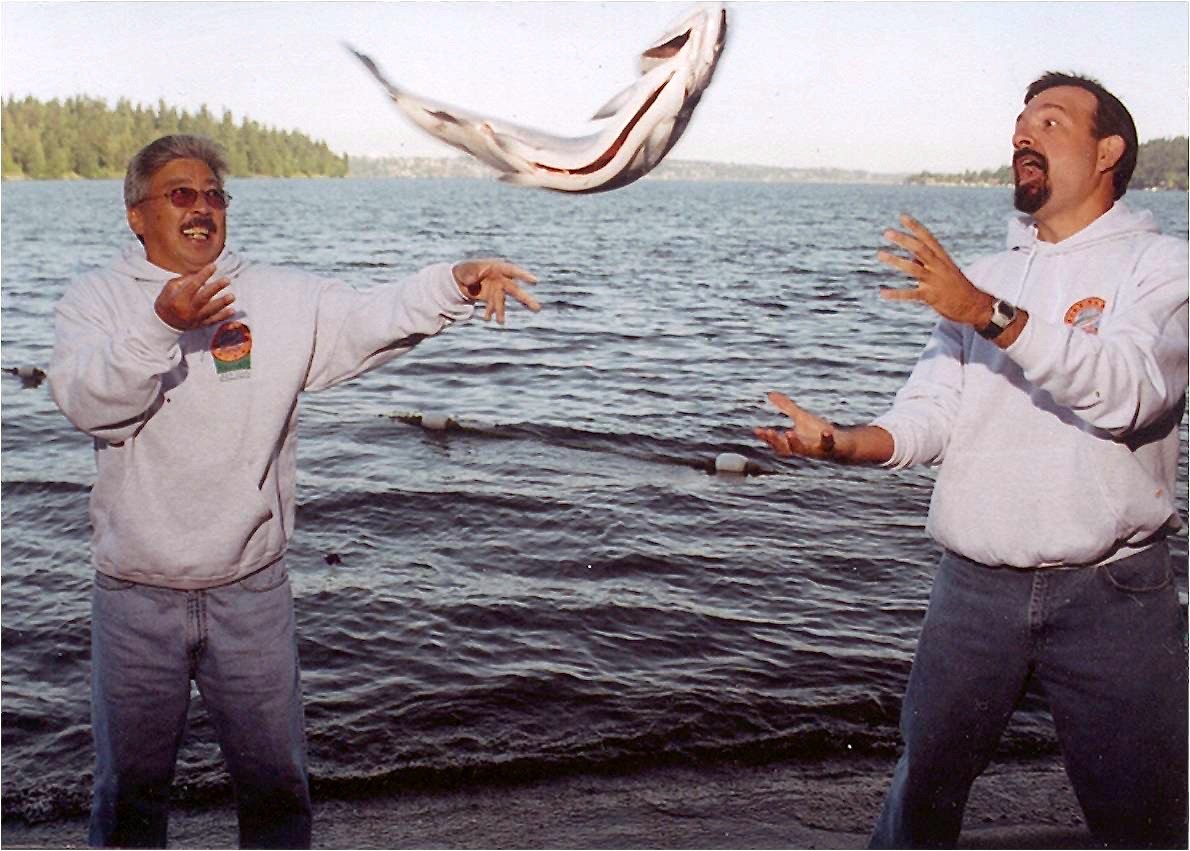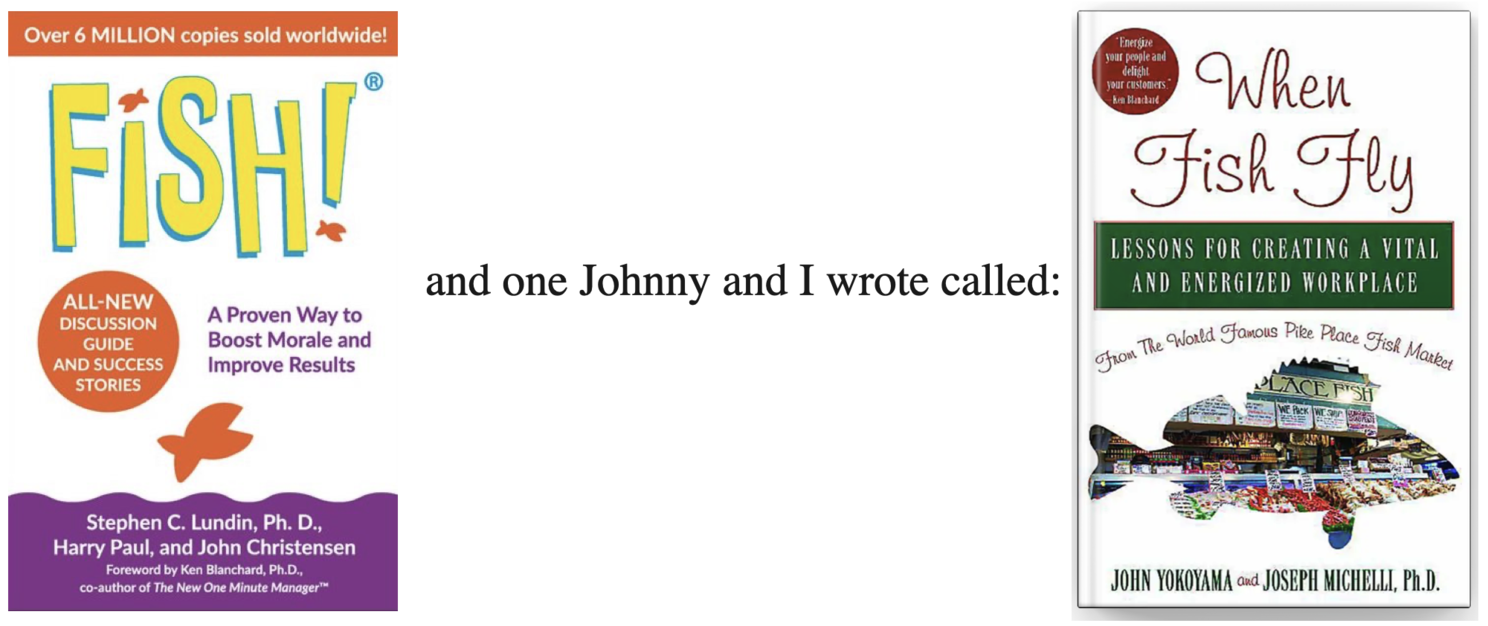Have you been to Seattle, Washington?
If so, you’ve probably visited or heard about the Pike Place Fish Market. In case you missed it, let me clue you in on Pike Place Fish and provide three customer experience lessons from this special 1,400-square-foot retail space.
I was fortunate to work with Johnny Yokoyama, the owner of the Pike Place Fish Market, early in my career as he created a unique customer experience that led to the meteoric growth of his business.
The special customer experience crafted by Johnny is captured in popular training videos and books like:
Enough context, let’s dive into three lessons from this high-energy fish market where they throw fish, engage crowds, and create memorable experiences.
Lesson 1 – Strive to Be Interested Rather than Interesting. Amid all the “look at me” behavior we see on social media, the team at Pike Place Fish Market achieves sustained financial success by “looking at” (and listening to) the people who approach their fish stand. By taking a let me get to know you so I can “make your day” approach, the fishmongers generate authentic and entertaining interactions with bystanders and customers.
Lesson 2 – Commit It, Be It, Coach It. The team at Pike Place Fish took the nearly bankrupt fish stand to unparalleled sales heights by committing to be “world-famous.” For the team, “world-famous” wasn’t about bringing fame to themselves but instead required them to make a “world-famous difference for each person they served.” Each fishmonger makes a daily verbal commitment to “be” that world-famous difference and commits to coach and be coached toward that goal.
Lesson 3 – Energy is Infectious. Pike Place Fish literally sells a dead, cold, slimy product, but they do so with frenetic and boisterous energy. In essence, the fishmongers’ playful spirit draws throngs of people who gather to watch, capture images and videos, and socially share their antics.
The Pike Place fishmongers turned around a “floundering” retail storefront that sells less than engaging products. What might you do when you apply these three CX lessons?
Related: Behavior vs. Score: How to Track What Actually Matters




